Jan 2013
Wasteland 2 Game Character Creation
31/01/13 22:26
Having freshly finished the texturing workshop I was looking for a project to practice my new skills.
I saw that a game company, inXile entertainment, had just started asking for crowed-sourced game models for their KickStarter funded re-make of a 1988 era game - Wasteland.
I decided to try and create the Slicer-Dicer droid based on the provided concept art. I had two weeks to model, texture (colour, spec & normal), rig and animate it. If they accept my version then they would buy it from the Unity3d Asset Store and include it in the game and give me a game credit .
.
I started by modelling a detailed high-poly version of the character and baked those details into a normal map for a low-poly (3500 tris) version. After UV unwrapping the low-poly model I then created the textures. Once it was textured I rigged the model with an armature and bones. I used Inverse Kinematics (IK) to control the legs and appendages. This made it easy to create walk, run and attack actions as well as an idle action.
Here is what I came up with.
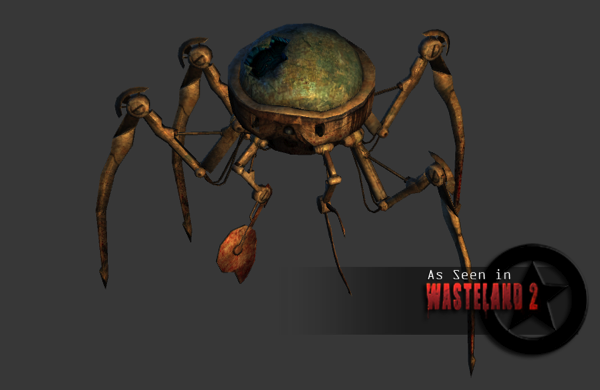
The characters in the Wasteland universe have a worn out look because industry shut down decades ago and new parts are impossible to come by.
Here is a small version of the 2048x2048 pixel colour map I created for it.
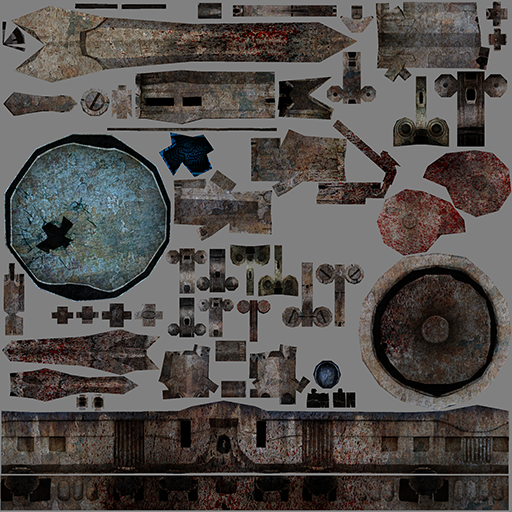
Here is a screen grab of the Slicer-Dicer in an example Unity3d scene.
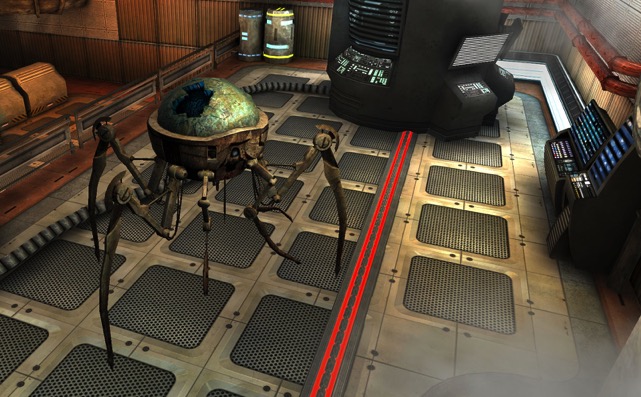

I saw that a game company, inXile entertainment, had just started asking for crowed-sourced game models for their KickStarter funded re-make of a 1988 era game - Wasteland.
I decided to try and create the Slicer-Dicer droid based on the provided concept art. I had two weeks to model, texture (colour, spec & normal), rig and animate it. If they accept my version then they would buy it from the Unity3d Asset Store and include it in the game and give me a game credit
I started by modelling a detailed high-poly version of the character and baked those details into a normal map for a low-poly (3500 tris) version. After UV unwrapping the low-poly model I then created the textures. Once it was textured I rigged the model with an armature and bones. I used Inverse Kinematics (IK) to control the legs and appendages. This made it easy to create walk, run and attack actions as well as an idle action.
Here is what I came up with.

The characters in the Wasteland universe have a worn out look because industry shut down decades ago and new parts are impossible to come by.
Here is a small version of the 2048x2048 pixel colour map I created for it.

Here is a screen grab of the Slicer-Dicer in an example Unity3d scene.


Environment Tetxuring
15/01/13 20:39
I have just completed another intensive eight week course with the CG Society. This time it was Environment Texturing by Leigh van der Byl.
In this course we were taken through the entire process of creating all the basic required textures for a street scene, starting from the process of gathering appropriate references, to creating rough concepts, to creating colour, bump, specular and reflection maps. Additionally, we were taught about fundamental industry standards, such as deciding on appropriate sizes for texture maps, and optimising work based on shots.
The level of detail and finish we were going for was that used in modern movies where the texture sizes are huge at 8192x8192 pixels! So each building colour texture file with all its Photoshop layers was about 700MB.
The bare clay street scene model was provided but I took it from there to produce this completed scene.
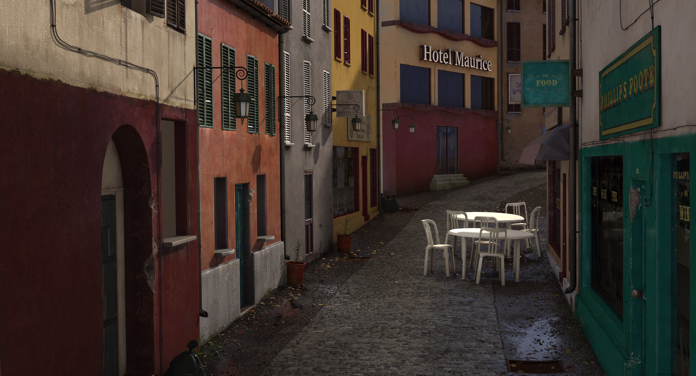
Here is a close-up of the cafe.
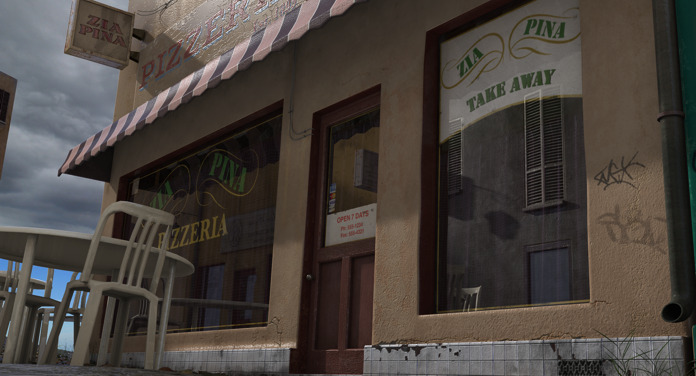
In this course we were taken through the entire process of creating all the basic required textures for a street scene, starting from the process of gathering appropriate references, to creating rough concepts, to creating colour, bump, specular and reflection maps. Additionally, we were taught about fundamental industry standards, such as deciding on appropriate sizes for texture maps, and optimising work based on shots.
The level of detail and finish we were going for was that used in modern movies where the texture sizes are huge at 8192x8192 pixels! So each building colour texture file with all its Photoshop layers was about 700MB.
The bare clay street scene model was provided but I took it from there to produce this completed scene.

Here is a close-up of the cafe.
